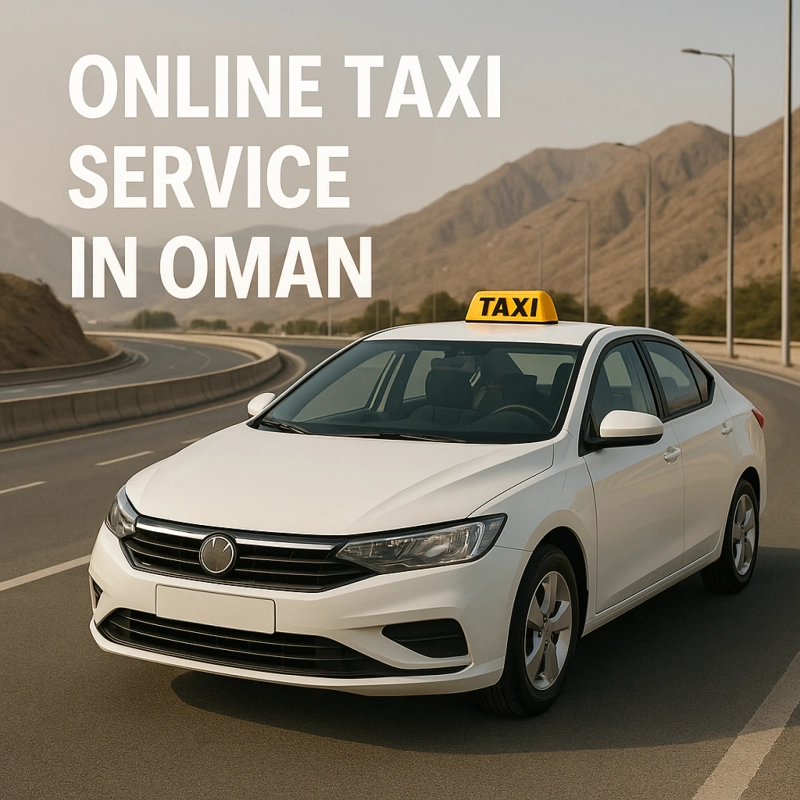The rapid growth of online taxi services has transformed the transportation sector globally, and Oman is no exception. Over the past few years, the Sultanate has embraced ride-hailing technology, providing residents and tourists with more efficient and convenient travel options. However, with this transformation comes the need for a robust regulatory framework to ensure safety, fairness, and quality of service. The Ministry of Transport, Communications, and Information Technology (MTCIT) has implemented comprehensive measures to regulate this growing industry, balancing innovation with public interest.
Licensing and Approval
A cornerstone of Oman’s regulatory framework is the requirement for all taxi operators traditional and online to obtain official licenses from the MTCIT. This ensures that all entities operating within the transportation sector adhere to national standards of safety and service quality. The ministry has approved several ride-hailing applications, including Otaxi, Tasleem, Ubar, Marhaba, TM DONE, Hala Taxi, Taxi Muscat, Tanweel, and Sayidati (a platform exclusively for women passengers). By limiting the number of authorized apps, the ministry can better oversee operations, monitor compliance, and maintain service consistency.
The licensing process for online taxi operators involves strict vetting, including background checks for both the companies and their drivers. This process is designed to prevent unregulated or unsafe services from entering the market.
Mandatory Integration with Approved Apps
To create a uniform standard across the taxi industry, the MTCIT has mandated that all taxi operators integrate with approved ride-hailing platforms. This policy applies to both independent drivers and traditional taxi companies. Integration with these platforms provides passengers with access to features such as real-time tracking, fare transparency, and customer support.
This measure also eliminates arbitrary pricing, as fares on these platforms are predetermined and displayed before the ride begins. The ministry has set clear deadlines for compliance, signaling its determination to modernize the sector. For instance, as of October 2023, all taxis in Oman were required to join an approved app, ensuring a level playing field and enhancing consumer trust.
Driver Regulations
Taxi drivers in Oman must meet stringent criteria to operate legally under the regulatory framework. Drivers are required to hold a valid light driving license with a minimum validity of three years. This ensures that only experienced and capable drivers are entrusted with passenger safety.
Moreover, to ensure fair compensation practices, the ministry has stipulated that a taxi driver’s monthly salary should not exceed a specified cap. This provision is designed to prevent exploitative wage practices, especially among drivers employed by larger companies.
The ministry also conducts regular training programs for drivers, focusing on customer service, road safety, and the use of ride-hailing technology.
Safety and Operational Guidelines
Passenger safety is a top priority for the MTCIT. In response to global health concerns, such as the COVID-19 pandemic, the ministry introduced several safety measures for taxi operators. These include maintaining vacant seats to allow for physical distancing, regular sanitization of vehicles, and the use of protective gear by drivers.
In addition, the integration of real-time tracking systems in approved apps has enhanced passenger safety by allowing users to share their ride details with family or friends. Drivers are also subjected to background checks, and their vehicles undergo periodic inspections to ensure roadworthiness.
Technology and Payment Systems
Technology plays a pivotal role in Oman’s regulatory framework for online taxi services. Approved ride-hailing apps offer features that enhance user convenience, such as GPS tracking, fare estimation, and multiple payment options. In line with the government’s push towards a cashless economy, these platforms support digital payments through debit and credit cards, reducing dependency on cash transactions.
By integrating advanced technologies, Oman’s online taxi services are better equipped to meet the expectations of a tech-savvy population and international tourists.
Socio-Economic Impact
The regulatory framework for online taxi services has also had a significant socio-economic impact. By encouraging the adoption of ride-hailing technology, the MTCIT has created new job opportunities for Omani nationals. The framework also supports entrepreneurship, enabling local drivers to operate independently through approved platforms.
Moreover, the competition between traditional taxis and online services has driven improvements in service quality, benefiting consumers. The introduction of ride-hailing apps has also contributed to sustainable urban mobility by reducing the reliance on personal vehicles and promoting shared transportation.
Future Prospects
The regulatory framework established by the MTCIT is not static, it evolves to address emerging challenges and opportunities. Looking ahead, Oman is exploring the integration of environmentally friendly solutions such as electric and hybrid taxis. Additionally, the government is examining the potential for autonomous vehicles, which could revolutionize the transportation sector further.
Oman’s regulatory framework for online taxi services in Oman reflects a proactive approach to modernizing the transportation sector while safeguarding the interests of all stakeholders. By enforcing licensing requirements, driver regulations, safety measures, and technological integration, the MTCIT ensures that online taxi services operate efficiently and responsibly.
This balanced approach not only enhances passenger experience but also fosters economic growth, making Oman’s transportation sector a model for innovation and sustainability in the region.


